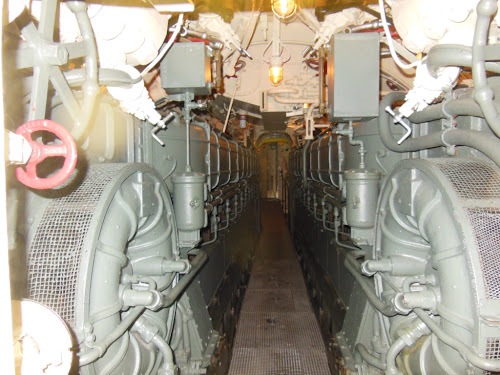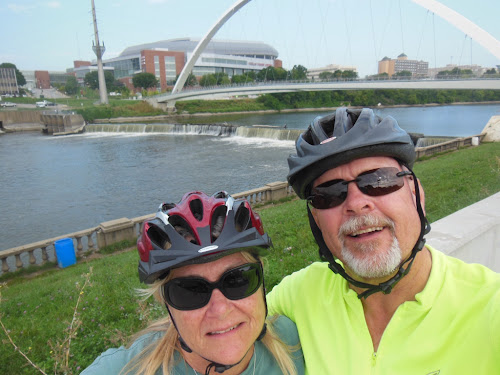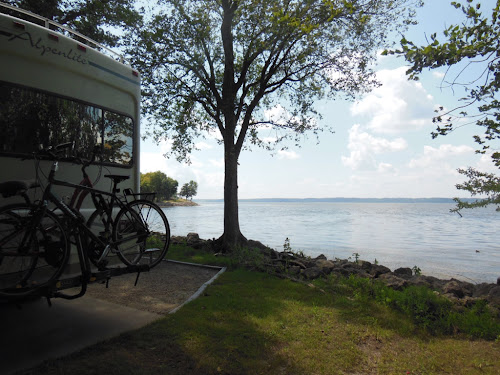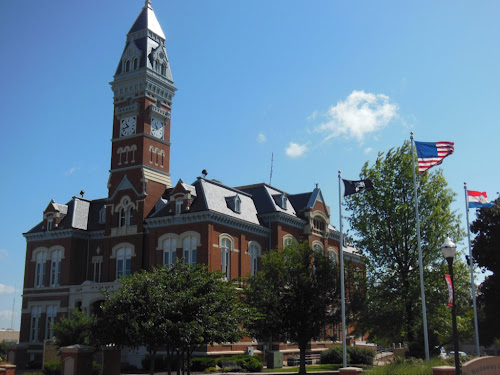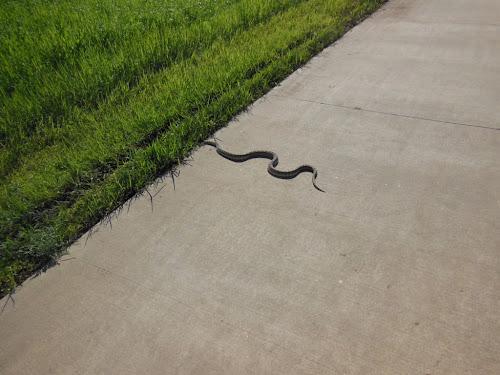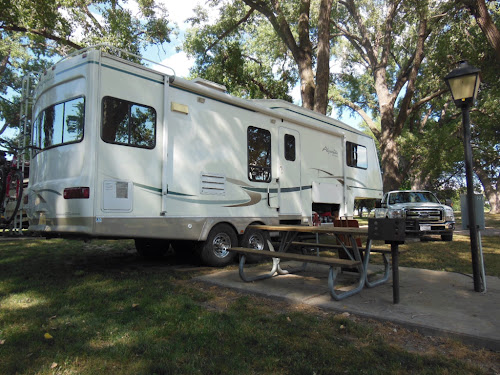Before we get to the title of this post an update of our travels. We stopped just west of Chicago in a nice county park, (not Cook County) where we stayed for 3 nights. Time for laundry and resupply, as there is a Costco and the last Trader Joe's that we will see for some time. A beautiful campground as you can tell by the photo.
Most readers probably know that most all RV's today have air conditioning, so why not tents?
Most of the states in our country have motto's or a saying that is particular to that state. California's motto is "Eureka". Illinois and Oklahoma have the same motto, "Stop, Pay Toll". There are so many toll roads in the Chicago area that they are difficult to avoid. Luckily the GPS can guide you along the roads that don't require a toll, though you have to use some common sense and avoid areas you would rather not spend time in. Another observation about Chicago and this part of Illinois is that there are a lot of large stores, markets and malls that have closed up. Their parking lots are growing weeds and the one or two business that remain have just a few cars parked it front of them. I didn't notice this in Iowa, Nebraska or Colorado, so what gives?
Now for the war story.
On June 4, 1944, the US Navy captured a German submarine off the coast of Africa after her crew failed to scuttle her. The U-505 was the first enemy ship captured by the US since the War of 1812, and the first of six U-boats to be captured during the war. To protect military secrets (including the breaking of the German Enigma codes), the capture of the U-505 was classified, the ship was renamed and hidden, and the crew was interred in a special POW camp and their existence was concealed from everyone, including the International Red Cross and the German Government.
The U-505 left for what would be her last combat mission, near the Canary Islands off the coast of Africa. The US Navy knew from Enigma intercepts that U-boats were in the area, and dispatched a hunter-killer task force, consisting of the escort carrier Guadalcanal and the destroyer escorts Pillsbury, Pope, Flaherty, Jenks and Chaterlain to hunt the Germans. On June 4, the task group made sonar contact with a submerged sub--the U-505. Wildcat fighters and Avenger torpedo bombers were launched from the Guadalcanal, and the destroyer escorts attacked with depth charges and Hedgehogs. An oil slick soon appeared, and then the damaged U-505 surfaced. The Captain of the sub ordered his crew to open the valves to flood the sub and sink her, and then abandon ship. For some reason, though, the scuttling valves were not all opened. When a boarding party from the Pillsbury reached the U-505, they found her empty, entered the sub, and captured her. The Navy then towed the U-505 to Bermuda, a journey of 1700 miles.
I had read a book about a year ago written by Hans Goebeler titled "Steel Boat, Iron Hearts". The author was a crew member on the U-505 when it was captured and the book was about his service on board. After the war and after being repatriated, Goebeler eventually became a US citizen, residing in the Chicago area.
No, I didn't go to Chicago to meet the author, but to see the submarine which is located at the Chicago Museum of Science and Industry. For many years the sub sat rusting away in the Portsmouth Navy Yard and it was to be used for target practice, but luckily in 1954 it was donated to the museum and towed through the Great Lakes to Chicago. It was put on display outside of the museum where over the years it suffered further damage due to the elements. Then 2004 it was moved inside to a specially designed, climate controlled underground location in the museum. Much restoration work was done on both the inside and outside of the sub before being placed on display.
FORWARD TORPEDO ROOM
CAPTAIN'S QUARTERS
DIESEL ENGINES
The above photo shows the sea strainer, which opens the sub to the sea. When US Navy personnel from the Pillsbury boarded the sinking sub, they found this open and water flowing in. They did the smart thing and put the lid back on.
There is a lot of other things to see at the museum including, trains, planes and automobiles. Many of the displays are interactive and a great learning experience for both children and adults.
PLAYING WITH ELECTRICITY
We are now in Sault Ste Marie in the most northern part of Michigan's Upper Peninsula, or the U.P. as the locals call it. We took two days driving from Chicago as not to put any stress on the 500 mile drive. From our campsite in the city, we look across the St. Mary River to Canada and watch the lake freighters as they transit between Lake Superior and Lake Huron.
After the holiday weekend we will be heading across the International Bridge into Canada. While we wait for the Labor Day holiday to pass, we will bide our time here.







